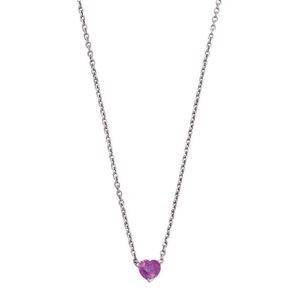Cartier Diamond Four Leaf Clover Necklace
You must be a subscriber, and be logged in to view price and dealer details.
Subscribe Now to view actual auction price for this item
When you subscribe, you have the option of setting the currency in which to display prices to $Au, $US, $NZ or Stg.
- Carat - A carat (abbreviated "ct") is a unit of measurement used to describe the weight of a diamond or other gemstone, and separately is a unit of measurement used to describe the weight of precious metals such as gold,.
For gemstones, one carat is equal to 0.2 grams or 200 milligrams. The weight of a diamond is one of the Four Cs (along with cut, colour, and clarity) that are used to determine a diamond's value.
It is important to note that a diamond's weight does not necessarily correspond to its size. A diamond's cut, which affects how well it reflects light, can make a diamond of a lower weight appear larger than a diamond of a higher weight. Additionally, the carat is not the only factor to determine the value of a diamond, other factors such as clarity, colour and cut are important too.
In the gold industry, the purity of gold is measured in carats (abbreviated "ct"), with 24 karats being pure gold and lower carat numbers indicating a lower purity level. So, for example, 18 carat gold is 18/24 or 75% pure gold, and 12 carat gold is 12/24 or 50% pure gold. - Circa - A Latin term meaning 'about', often used in the antique trade to give an approximate date for the piece, usually considered to be five years on either side of the circa year. Thus, circa 1900 means the piece was made about 1900, probably between 1895 and 1905. The expression is sometimes abbreviated to c.1900.
This item has been included into following indexes:
Visually similar items

Platinum and diamond 'Victoria' pendant necklace, Tiffany & Co., designed as a flowerhead, the four marquise-shaped diamonds are claw-set on the bias, completed by a fine trace chain, the diamonds together weighing approximately 0.64 carat, circumference a

18ct white gold and pink sapphire pendant necklace, Cartier centring on a heart-shaped pink sapphire weighing approximately 1.20 carats, to a trace chain, length approximately 38 mm, signed Cartier, 2001, numbered M90351. Accompanied by a Cartier pouch.

A 9ct gold belcher chain, with later parrot clasp, length 55 cm, wt. 22g.

An 18ct gold curb chain, with parrot clasp, length 50 cm, wt. 29g.
